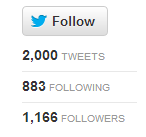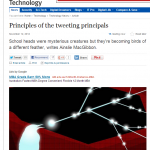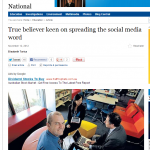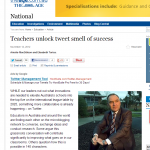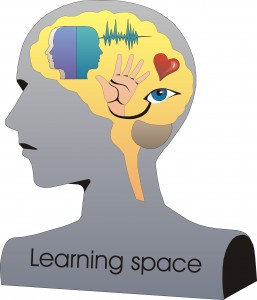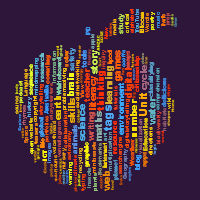If anyone had told me a few years ago that as of December 2012, I would have accumulated a story of 2000 tweets, 1166 followers and be following 883 others, I would have seriously doubted it. But here I am today, and these are the statistics.
It has been an amazing journey and I have enjoyed every bit. I followed what appears to be the traditional route – sign up, lurk, follow a few, a few retweets and then getting in to the full swing of it and encouraging others to participate too. As a professional, I think differently because of the potential Twitter has opened up for me. I now have connections and in some case new friendships with an amazing network of educators – educators from all over the world, from all sectors of education and involved in leadership, as well as all levels of education – primary, secondary and tertiary. I follow a few of the ‘celebrity’ educational tweeters, but draw more support from the every day teachers who so generously participate in this global staffroom.
It has been very encouraging over the past few months to see positive stories about the use of Twitter as a tool to enhance our learning. Hopefully this is un-doing some of the bad reputation Twitter has accumulated by the poor use of a few celebrities.
When you are so convinced that something is great, it is easy to be evangelistic and suggest that everyone should get involved, but I will not be that idealistic. I do hope however, that all teachers in some way accept that our profession is no longer private, we should be looking for opportunities to share our questions, or ideas and our passions. Whether they join a Ning, read blogs, participate in online learning opportunities or at the very least talk to the teachers in their school and share ideas and thoughts. We owe it to our students to model this style of learning.
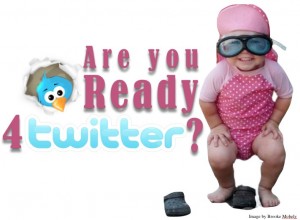 There are many other posts on the value of Twitter – a few below
There are many other posts on the value of Twitter – a few below
Again; Relevance, Why Twitter by Tom Whitby
Are you ready 4 Twitter? Another wonderful post by Silvia Rosenthal Tolisano.
Does Twitter improve education? or “Does the USE of Twitter Improve Education?” by George Couros
A video from AITSL’s Teacher Feature Collection
Finally a wonderful post by Bec Spink, about her use of Twitter with students as well as a professional learning opportunity.
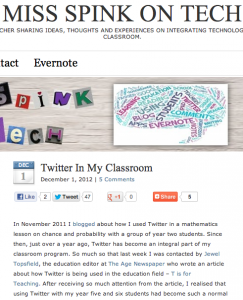
Thanks to all those who have been part of this journey and in particular to the State Library of Victoria’s PLN program that was the instigator for my original connection. I wonder what I will be tweeting about in 2 more years or 2000 tweets away?
